Peach Tree vs Highlighter THCa Indoor Flower: Complete Strain Comparison
Choosing between Peach Tree and Highlighter THCa indoor flower can feel overwhelming when both strains promise premium quality and exceptional effects. With the rapidly expanding THCa flower market, discerning consumers are seeking detailed comparisons to make informed decisions about their cannabis investments. This comprehensive THCa strain comparison examines every aspect of these two popular indoor-grown varieties, from their genetic backgrounds to their real-world effects and value propositions.
THCa (tetrahydrocannabinolic acid) represents the non-psychoactive precursor to THC found in fresh cannabis plants. When heated through smoking, vaping, or cooking, THCa converts to THC, producing the familiar psychoactive effects cannabis users seek. Indoor flower review standards have evolved significantly as cultivators perfect their techniques, resulting in consistently potent, flavorful, and visually stunning products that rival traditional marijuana in quality and effects.
Indoor cultivation offers distinct advantages over outdoor growing, including precise environmental control, protection from pests and weather, and the ability to optimize lighting schedules for maximum cannabinoid production. This controlled environment typically produces denser, more resinous buds with higher THCa potency and more pronounced terpene profiles. Both Peach Tree and Highlighter benefit from these indoor growing advantages, but they express their genetics differently under controlled conditions.
Our cannabis strain comparison covers five critical evaluation points: genetic origins and cultivation characteristics, visual appearance and aromatic profiles, effects and potency levels, flavor experiences across different consumption methods, and overall value propositions. By the end of this detailed analysis, you'll have the knowledge needed to select the strain that best matches your preferences, tolerance level, and intended use cases.
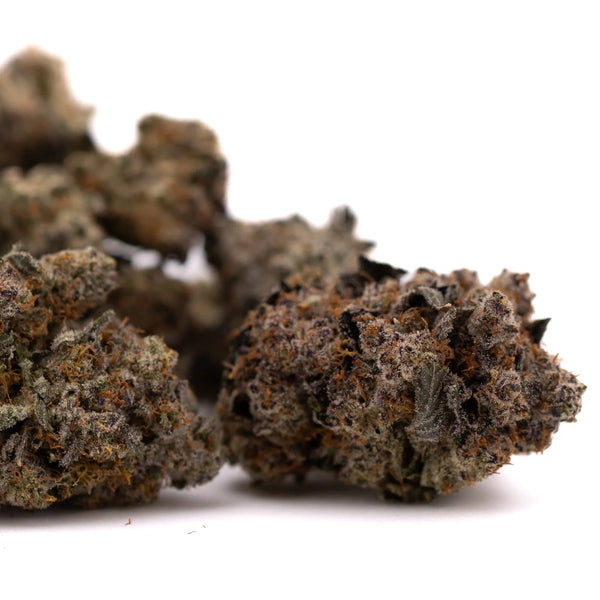
Strain Origins & Genetics
Understanding the genetic foundations of Peach Tree and Highlighter provides crucial insight into their effects, flavors, and growing characteristics. These backgrounds directly influence everything from terpene production to THCa potency levels and overall user experiences.
Peach Tree THCa originates from a carefully selected phenotype known for its exceptional fruit-forward terpene profile and balanced cannabinoid expression. This strain represents a hybrid cultivar that combines the best characteristics of its parent genetics, resulting in a plant that thrives under indoor growing conditions while maintaining genetic stability across multiple generations. The lineage includes genetics known for producing high THCa concentrations while preserving complex terpene profiles that survive the curing process intact.
The development of Peach Tree involved selecting parent plants that demonstrated exceptional resin production, structural integrity, and consistent cannabinoid profiles. Breeders focused on maintaining the strain's signature peachy aroma while maximizing THCa production through selective breeding programs that emphasized both potency and terpene preservation. This careful selection process results in plants that produce dense, resinous buds with consistent effects and flavors batch after batch.
Highlighter strain development followed a different path, with breeders prioritizing unique color expressions and exceptional bag appeal alongside potent effects. The genetics behind Highlighter emphasize anthocyanin production, which creates the strain's distinctive purple and pink colorations that make it instantly recognizable. These visual characteristics don't just serve aesthetic purposes – they often correlate with specific terpene profiles and cannabinoid ratios that contribute to the strain's unique effects profile.
Indoor grown cannabis cultivation significantly impacts both strains' final expressions, though in different ways. Peach Tree responds exceptionally well to controlled lighting schedules that maximize terpene preservation during the flowering phase. Growers typically employ specific temperature and humidity protocols that enhance the strain's natural fruit flavors while encouraging maximum resin production. The strain's moderate stretch during flowering makes it ideal for indoor setups with height restrictions.
Highlighter's indoor cultivation requirements focus on temperature manipulation during the final weeks of flowering to encourage maximum color development. This strain benefits from slightly cooler nighttime temperatures that trigger anthocyanin production, resulting in the vibrant purples and pinks that give Highlighter its name. The cultivation process requires experienced growers who understand how to balance color development with THCa production, as pushing too hard for colors can sometimes compromise potency.
Growing difficulty varies significantly between these strains. Peach Tree offers a more forgiving growing experience, making it suitable for cultivators with intermediate skills. The strain demonstrates good resistance to common indoor growing challenges like powdery mildew and nutrient deficiencies. Its consistent growth patterns and predictable flowering timeline make it a reliable choice for commercial cultivation operations.
Highlighter presents more challenges during cultivation, requiring advanced growing skills to achieve its full potential. The strain's sensitivity to environmental fluctuations means that temperature, humidity, and lighting must be precisely controlled throughout the growing cycle. However, experienced growers are rewarded with exceptional yields of visually stunning, highly potent flower that commands premium prices in the marketplace.
Yield comparisons show interesting differences between these strains under identical growing conditions. Peach Tree typically produces moderate yields of extremely dense, resinous buds that make up for lower plant counts with superior quality. The strain's natural tendency to produce fewer but larger colas works well for indoor operations focused on maximizing space efficiency.
Highlighter often produces higher overall yields per plant, though individual bud density may be slightly lower than Peach Tree. The strain's branching structure responds well to training techniques like SCROG (Screen of Green) that maximize canopy coverage and light penetration. When grown properly, Highlighter can produce impressive harvests of colorful, potent flower that stands out in any collection.
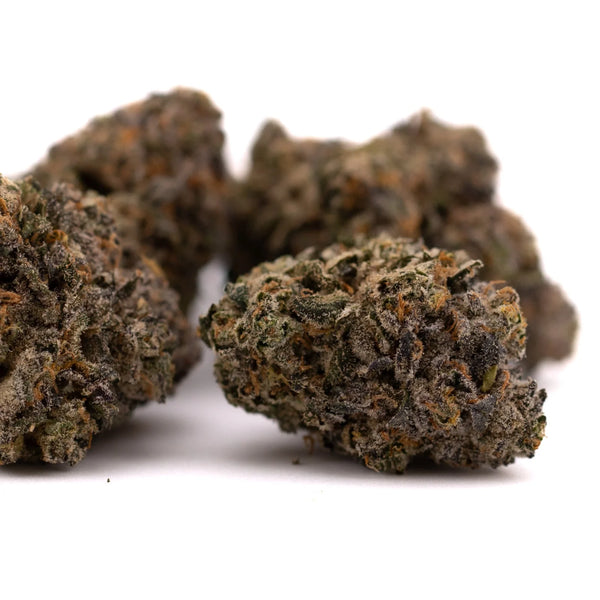
Appearance & Aroma Profile
Visual appeal plays a crucial role in hemp flower review criteria, as consumers often make purchasing decisions based on first impressions. Both Peach Tree and Highlighter offer distinct aesthetic experiences that reflect their genetic differences and indoor cultivation advantages.
Peach Tree buds showcase the classic indica-dominant structure with tight, dense formations that feel substantial in hand. The flowers display a beautiful green foundation with subtle purple undertones that become more pronounced under proper lighting. Bright orange pistils weave throughout the bud structure, creating an attractive contrast against the darker background colors. The overall appearance suggests premium quality even before examining trichome coverage.
Trichome development on Peach Tree reaches exceptional levels under optimal indoor growing conditions. The entire bud surface appears frosted with a thick coating of milky trichomes that extend onto surrounding sugar leaves. Under magnification, these trichomes display the perfect cloudy appearance that indicates peak THCa production. The resin coverage is so dense that handling the buds leaves fingers sticky with aromatic oils.
The Highlighter strain review consistently emphasizes the variety's stunning visual presentation. True to its name, Highlighter buds display vibrant purple and pink hues that make them instantly recognizable. These colors aren't just surface-deep – they penetrate throughout the bud structure, creating a genuinely colorful flower that maintains its appearance even after grinding. The contrast between the dark purple background and bright orange pistils creates an almost psychedelic visual effect.
Trichome production on Highlighter matches its exceptional visual appeal with equally impressive resin coverage. The colorful background actually enhances the appearance of the milky white trichomes, creating a frost-covered appearance that sparkles under proper lighting. The combination of colors and trichome coverage makes Highlighter one of the most visually appealing strains in the current THCa market.
Bud structure differences become apparent when comparing samples side by side. Peach Tree produces extremely dense, compact buds that resist compression and maintain their structure during handling and storage. This density contributes to the strain's excellent shelf life and preservation of aromatic compounds. The tight structure also means that a little goes a long way when breaking up buds for consumption.
Highlighter buds display a slightly more open structure that showcases the strain's internal colors while maintaining good density. The buds feel solid without being rock-hard, making them easy to break apart while preserving the delicate trichome coverage. This structure allows for better airflow during curing, which helps preserve the strain's complex terpene profile.
Terpene profiles create the foundation for each strain's distinctive aromatic experience. Peach Tree lives up to its name with a complex bouquet dominated by fruity esters that genuinely resemble fresh peaches. The primary terpenes include myrcene for the fruit-forward character, limonene for citrus brightness, and caryophyllene for subtle spicy undertones. This combination creates an aromatic profile that remains engaging session after session.
The scent evolution in Peach Tree reveals different layers as the flower is handled and heated. Initial impressions focus on the sweet, fruity top notes that immediately capture attention. Breaking apart the buds releases deeper, more complex aromas including hints of vanilla and cream that complement the peachy foundation. When heated, these terpenes create an incredibly pleasant aromatic experience that enhances the overall consumption ritual.
Highlighter's terpene profile emphasizes different compounds that contribute to both its effects and aromatic character. The strain features high levels of anthocyanins alongside traditional terpenes, creating a unique scent profile that combines berry-like sweetness with earthy, floral undertones. Pinene contributes pine-like freshness while linalool adds subtle floral complexity that rounds out the overall aromatic experience.
The aromatic evolution in Highlighter follows a different pattern than Peach Tree. Initial impressions reveal berry-like sweetness with subtle floral undertones. Grinding releases more complex aromas including hints of grape, vanilla, and earth that create a sophisticated bouquet. The heating process transforms these compounds into a smooth, pleasant smoke or vapor that maintains the strain's complex character throughout the session.
Color variations between batches can occur with both strains, though indoor cultivation helps maintain consistency. Peach Tree shows minimal color variation between batches when grown under identical conditions, maintaining its characteristic green and purple appearance. However, slight environmental changes during flowering can influence the intensity of purple coloration without affecting quality or potency.
Highlighter displays more dramatic color variations that depend heavily on growing conditions, particularly temperature fluctuations during the final weeks of flowering. Cooler temperatures enhance purple and pink development, while warmer conditions may result in more green coloration. However, even less colorful batches maintain the strain's exceptional potency and terpene profile.
Bag appeal represents the overall visual impression that influences purchasing decisions and user satisfaction. Both strains excel in this category, though they appeal to different aesthetic preferences. Peach Tree offers classic premium cannabis appearance with its dense structure, heavy trichome coverage, and balanced color palette that suggests quality and potency.
Highlighter provides exceptional bag appeal through its unique color expression combined with impressive resin production. The strain's visual impact often exceeds expectations, creating memorable first impressions that enhance the overall user experience. This combination of beauty and potency makes Highlighter particularly popular among consumers who appreciate both form and function in their cannabis choices.
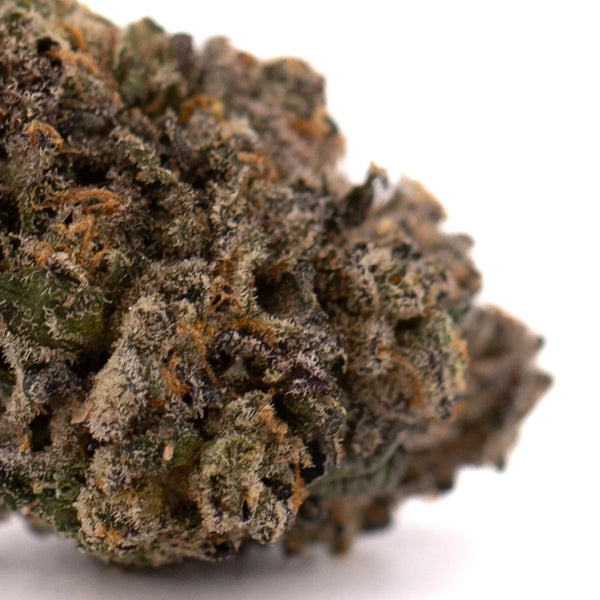
Effects & Potency Comparison
THCa potency serves as a primary consideration for consumers comparing different strains, though the complete effects profile involves much more than raw cannabinoid percentages. Both Peach Tree and Highlighter demonstrate impressive potency levels that satisfy experienced users while remaining approachable for those with moderate tolerance levels.
Laboratory testing consistently shows Peach Tree THCa effects correlating with potency levels ranging from 18-22% THCa, placing it firmly in the high-potency category. These levels convert to approximately 16-19% THC when decarboxylated through heating, providing substantial psychoactive potential. However, the strain's balanced terpene profile modulates these effects, creating a more nuanced experience than raw potency numbers might suggest.
The conversion process from THCa to THC occurs rapidly when Peach Tree is smoked or vaporized, with users typically reporting noticeable effects within 2-5 minutes of consumption. This quick onset makes it easy to titrate dosage and avoid overconsumption, particularly important given the strain's relatively high potency levels. The effects build gradually over the first 15-20 minutes before reaching peak intensity.
Highlighter strain testing reveals similar potency ranges, typically measuring between 19-23% THCa content. These levels represent the upper end of what's commonly available in the legal THCa market, making Highlighter suitable for users seeking maximum potency. The strain's unique terpene profile, influenced by its colorful genetics, creates effects that feel distinct from other high-potency varieties.
Onset timing for Highlighter follows similar patterns to Peach Tree when smoked or vaporized, with initial effects appearing within 2-5 minutes. However, the effects progression differs slightly, with Highlighter often producing more immediate cerebral stimulation followed by gradually increasing body effects. This progression pattern makes it popular among users who enjoy the transition from mental clarity to physical relaxation.
Duration differences between the strains become apparent during extended sessions. Peach Tree typically provides 2-4 hours of noticeable effects, with peak intensity lasting approximately 45-90 minutes depending on individual tolerance and consumption amount. The comedown is generally smooth and gradual, without the abrupt drop-off that some high-potency strains produce.
Highlighter's effects duration often extends slightly longer, with noticeable effects lasting 3-5 hours in many users. Peak intensity may be more pronounced and sustained compared to Peach Tree, though individual responses vary significantly. The extended duration makes Highlighter particularly popular for evening use when longer-lasting effects are desired.
Mental vs physical effects represent a crucial distinction between these strains. Peach Tree produces balanced effects that combine moderate cerebral stimulation with noticeable body relaxation. Users frequently report enhanced mood, mild euphoria, and creative thinking alongside physical tension relief and general relaxation. This balance makes Peach Tree versatile for both daytime and evening use.
The mental effects of Peach Tree include enhanced focus for creative activities, improved mood, and a general sense of well-being without overwhelming psychoactive intensity. Many users find it enhances social interactions and creative pursuits while maintaining functional capability for daily activities. The strain rarely produces anxiety or paranoia, even in sensitive users.
Physical effects from Peach Tree include muscle relaxation, tension relief, and a general sense of physical comfort without complete sedation. This makes it popular among users seeking relief from minor aches and pains while maintaining mobility and functionality. The body effects complement rather than overwhelm the mental experience.
Highlighter produces more pronounced cerebral effects initially, with many users reporting enhanced creativity, elevated mood, and increased mental energy. These effects often transition into more balanced full-body relaxation after 30-60 minutes, creating a dynamic experience that changes over time. The progression makes it interesting for users who enjoy evolving effects.
The initial mental stimulation from Highlighter can enhance focus for creative projects, social situations, or entertainment activities. Users frequently report enhanced appreciation for music, art, and food during the peak effects period. The cerebral effects are typically uplifting and positive without causing anxiety in most users.
As Highlighter's effects mature, physical relaxation becomes more prominent while maintaining mental clarity. This combination of relaxed body and alert mind makes it popular for evening use when users want to wind down physically while remaining mentally engaged with entertainment or social activities.
User testimonials provide valuable real-world insights beyond laboratory data and standardized descriptions. Peach Tree consistently receives praise for its smooth, balanced effects that satisfy both recreational and wellness-focused users. Many testimonials emphasize the strain's reliability and consistency across different batches and consumption methods.
Common themes in Peach Tree reviews include appreciation for its smooth smoke, pleasant flavor, and predictable effects that enhance rather than overwhelm daily activities. Users frequently mention its value as an all-purpose strain that works well in various situations without causing negative side effects like anxiety or excessive sedation.
Highlighter testimonials often focus on the strain's exceptional bag appeal combined with potent, enjoyable effects. Users frequently mention the visual impact of the colorful buds and how the unique appearance enhances the overall experience. Many reviews emphasize the strain's ability to provide strong effects while maintaining smooth consumption characteristics.
Best use cases vary between the strains based on their distinct effects profiles. Peach Tree excels as a versatile, all-purpose strain suitable for various situations throughout the day. Its balanced effects make it appropriate for creative activities, social situations, mild physical discomfort, stress relief, and general mood enhancement. The strain's moderate intensity allows for functional use while providing noticeable benefits.
Specific use cases for Peach Tree include afternoon creative sessions, social gatherings, mild pain management, stress relief after work, and general mood improvement. Its smooth effects and pleasant flavor make it suitable for users who want consistent, reliable results without overwhelming intensity.
Highlighter serves best in situations where higher potency and longer duration are desired. The strain excels for evening use, entertainment activities, creative projects that benefit from enhanced focus, and situations where strong effects are specifically sought. Its unique visual appeal also makes it popular for special occasions and sharing with others.
Ideal use cases for Highlighter include evening relaxation sessions, creative projects, entertainment activities like movies or concerts, social situations where conversation flows freely, and times when strong, long-lasting effects are specifically desired. The strain's potency makes it less suitable for daytime functional use compared to Peach Tree.
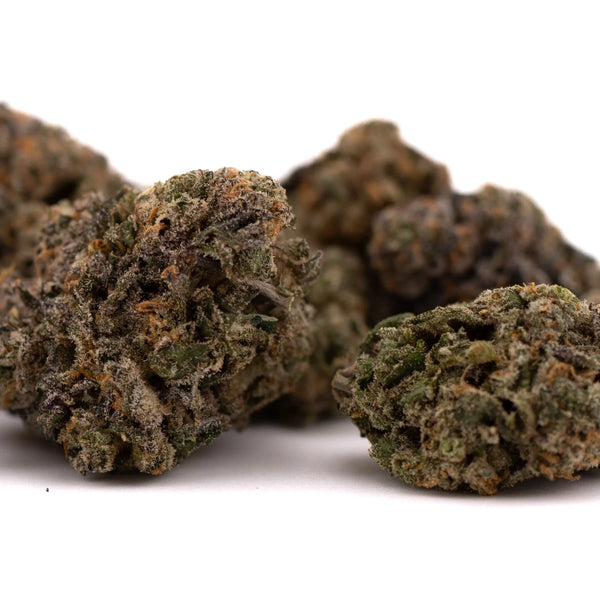
Flavor Profile & Consumption
THCa flower effects extend beyond just potency and duration to include the complete sensory experience during consumption. Flavor profiles significantly influence user enjoyment and can enhance or detract from the overall effects experience. Both Peach Tree and Highlighter offer distinct flavor journeys that complement their effects profiles.
When smoked, Peach Tree delivers on its name with authentic peachy flavors that translate remarkably well from aroma to taste. The initial draw reveals sweet, fruity notes that genuinely resemble fresh peaches, followed by subtle vanilla and cream undertones that add complexity without overwhelming the primary fruit character. The flavor development continues throughout the session, with deeper earth and spice notes emerging in later draws.
The smoking experience with Peach Tree emphasizes smoothness over harshness, making it accessible to users who typically find smoked cannabis irritating. The terpene profile creates naturally smooth smoke that doesn't require extensive coughing or throat discomfort, even for sensitive users. This smoothness extends the enjoyable aspects of consumption while minimizing negative side effects.
Combustion brings out different aspects of Peach Tree's flavor profile compared to vaporization. Smoking tends to emphasize the sweeter, fruitier elements while adding subtle smokiness that complements rather than masks the natural terpenes. The combination creates a balanced flavor experience that remains pleasant throughout extended sessions.
Highlighter's flavor profile when smoked reveals the complexity hidden within its colorful genetics. Initial draws provide berry-like sweetness with subtle grape undertones that reflect the strain's purple coloration. As the session progresses, more complex flavors emerge including floral notes, subtle spice, and earthy undertones that create a sophisticated tasting experience.
The smoking characteristics of Highlighter emphasize smoothness despite its high potency levels. The strain's terpene profile creates naturally smooth smoke that allows users to appreciate the complex flavors without excessive harshness. This combination of potency and smoothness makes it popular among users who want strong effects without sacrificing consumption comfort.
Combustion affects Highlighter's flavors differently than Peach Tree, with smoking tending to emphasize the berry and grape characteristics while adding complementary smokiness. The heating process transforms the complex terpene profile into a pleasant smoke that maintains the strain's distinctive character throughout the session.
Vaporization reveals different aspects of both strains' flavor profiles by heating the flower to lower temperatures that preserve more delicate terpene compounds. This consumption method often provides the purest expression of each strain's natural flavors without the additional compounds created during combustion.
Peach Tree's vaporized flavor profile emphasizes the pure fruit essence that gives the strain its name. Lower temperature vaporization (315-350°F) highlights the sweet, peachy character while preserving subtle complexity that can be lost during smoking. Medium temperatures (350-385°F) add more body to the flavor while maintaining the fruit-forward character.
Higher temperature vaporization (385-420°F) with Peach Tree creates a more full-bodied flavor experience that includes earth and spice notes alongside the primary fruit character. This temperature range often provides the best balance between flavor preservation and vapor production for most users.
Vaporized Highlighter reveals additional flavor complexity that may be less apparent when smoked. Lower temperatures emphasize the berry and floral characteristics that reflect the strain's unique genetics. The grape-like flavors become more pronounced at moderate temperatures while maintaining the smooth consumption characteristics.
Higher temperature vaporization with Highlighter brings out more of the earthy, spicy undertones that add depth to the primary berry flavors. The strain's complex terpene profile benefits from temperature stepping, where users gradually increase temperature throughout the session to experience different flavor layers.
Smoothness and harshness levels vary significantly between strains and consumption methods, directly affecting user comfort and session duration. Both Peach Tree and Highlighter demonstrate above-average smoothness that makes them suitable for extended sessions or sensitive users.
Peach Tree's natural smoothness stems from its terpene profile, which includes compounds that reduce throat irritation during consumption. The strain rarely produces excessive coughing even in users who typically find smoked cannabis harsh. This smoothness allows users to fully appreciate the flavor profile without distraction from throat discomfort.
The curing process significantly impacts Peach Tree's smoothness, with properly cured flower demonstrating exceptional smoothness compared to rushed or improperly cured samples. Indoor cultivation advantages include precise environmental control during curing that maximizes smoothness while preserving potency and flavor.
Highlighter demonstrates similar smoothness characteristics despite its higher average potency levels. The strain's terpene profile includes compounds that naturally reduce harshness while enhancing flavor delivery. Users frequently comment on the unexpectedly smooth consumption experience given the strain's high THCa content.
Proper curing becomes even more critical for Highlighter due to its dense bud structure and high resin content. Well-cured samples provide exceptional smoothness while poorly cured flower may exhibit harshness that masks the strain's natural flavor complexity. Quality indoor cultivation practices ensure consistent smoothness across different batches.
Best consumption methods vary based on user preferences, desired effects intensity, and flavor priorities. Both strains perform well across different consumption methods, though each method emphasizes different aspects of their characteristics.
Smoking remains the most popular consumption method for both strains, providing rapid onset, full flavor development, and familiar user experience. Glass pipes and water filtration devices work particularly well with both strains, allowing users to appreciate their smooth characteristics while cooling the smoke for maximum comfort.
Joint consumption emphasizes the natural smoothness of both strains while providing longer session duration and social sharing opportunities. The slow, even burn characteristics of properly cured indoor flower make both strains suitable for joint consumption without excessive harshness or uneven burning.
Vaporization offers the purest flavor experience for users who prioritize taste over ritual. Both strains perform exceptionally well in quality vaporizers, with dry herb vaporizers providing better flavor preservation than concentrates or extracts made from the same genetics.
Food pairing suggestions enhance the overall consumption experience by complementing each strain's unique flavor profiles. These pairings work particularly well when consuming via methods that preserve flavor complexity like vaporization or high-quality smoking devices.
Peach Tree's fruit-forward flavor profile pairs excellently with complementary foods that enhance rather than compete with its natural peachy character. Fresh fruits like berries, citrus, or tropical varieties create harmonious combinations that emphasize the strain's sweet characteristics. Light desserts, vanilla-based treats, and fruit-forward beverages also complement the consumption experience.
Savory pairings for Peach Tree include mild cheeses, light crackers, and subtle nuts that provide texture contrast without overwhelming the delicate fruit flavors. The strain's balanced effects make it suitable for consumption alongside light meals or snacks that don't require intensive preparation.
Highlighter's more complex flavor profile allows for diverse food pairings that range from sweet to savory. The berry and grape characteristics pair well with dark chocolate, rich desserts, and wine-like beverages that complement the sophisticated flavor development. The strain's more intense effects make it suitable for pairing with more substantial foods.
Savory options for Highlighter include aged cheeses, cured meats, and complex bread that provide substantial flavors to match the strain's intensity. The longer duration of effects makes it suitable for pairing with full meals or extended tasting experiences that unfold over time.
Price & Value Analysis
Compare THCa flowers requires understanding not just the upfront costs but the overall value proposition each strain provides. Premium indoor cultivation commands higher prices than outdoor or greenhouse alternatives, but the quality improvements often justify the additional expense for discerning consumers.
Current market analysis shows best THCa indoor strains 2025 commanding premium prices that reflect their quality advantages over other cultivation methods. Indoor-grown THCa flower typically costs 20-40% more than comparable outdoor varieties, but this price difference reflects significant quality improvements in potency, flavor, and consistency.
Peach Tree pricing reflects its position as a premium indoor variety with consistent quality and effects. The strain typically retails in the $45-65 per eighth range depending on local market conditions and retailer positioning. This pricing places it in the premium category while remaining competitive with other high-quality indoor THCa varieties.
The value proposition for Peach Tree emphasizes consistency, quality, and versatility that justify its premium pricing. Users frequently report that the strain's reliable effects and smooth consumption characteristics reduce overall consumption compared to lower-quality alternatives. This efficiency factor effectively reduces the per-session cost despite higher upfront pricing.
Highlighter commands slightly higher prices due to its exceptional bag appeal and higher average potency levels. Typical pricing ranges from $50-70 per eighth, positioning it in the ultra-premium category alongside other visually striking, high-potency indoor varieties. The unique visual characteristics often justify the price premium for consumers seeking exceptional products.
The value analysis for Highlighter focuses on the combination of potency, visual appeal, and extended effects duration that provide enhanced value per session. Users report that the strain's higher potency and longer-lasting effects reduce the amount needed per session, partially offsetting the higher upfront cost through improved efficiency.
Bulk purchasing considerations become important for regular consumers seeking to optimize their cost per gram while ensuring consistent supply of preferred strains. Both Peach Tree and Highlighter offer better value propositions when purchased in larger quantities, though minimum order requirements and storage considerations affect the practical aspects of bulk buying.
Quarter-ounce purchases typically provide 10-15% savings compared to eighth-ounce pricing, making them attractive for users who consume regularly and want to reduce per-session costs. Half-ounce and full-ounce purchases often provide even greater savings, though proper storage becomes critical for maintaining quality over extended periods.
Storage requirements for bulk purchases include airtight containers, stable temperature and humidity levels, and protection from light exposure that can degrade cannabinoids and terpenes over time. Properly stored indoor flower maintains its quality for 6-12 months, making bulk purchases practical for regular users.
Value-based comparisons consider the complete user experience rather than focusing solely on price per gram. Both strains offer distinct value propositions that appeal to different consumer priorities and usage patterns.
Peach Tree provides excellent value for users seeking consistent, versatile effects with smooth consumption characteristics. The strain's balanced profile makes it suitable for various situations, effectively serving as an all-purpose variety that reduces the need for multiple different strains. This versatility enhances its value proposition for users who prefer simplicity.
The reliability factor significantly contributes to Peach Tree's value proposition. Users report consistent experiences across different batches, reducing the uncertainty and potential waste associated with inconsistent products. This reliability factor becomes particularly valuable for users who depend on consistent effects for wellness purposes.
Highlighter's value proposition emphasizes the combination of exceptional potency, unique visual appeal, and complex effects that provide premium experiences. Users seeking maximum potency and distinctive characteristics often find the additional cost worthwhile given the enhanced experience quality.
The extended effects duration of Highlighter contributes to its value proposition by reducing the frequency of consumption needed to maintain desired effects. Users report needing fewer sessions to achieve and maintain their preferred effects level, which can offset the higher upfront cost through reduced overall consumption.
Market positioning analysis shows both strains occupying distinct segments within the premium THCa flower market. This positioning affects pricing strategies and value perceptions among different consumer groups.
Peach Tree targets consumers seeking reliable, high-quality indoor flower with broad appeal and consistent performance. This positioning allows for competitive pricing within the premium segment while maintaining quality standards that justify the price point. The strain appeals to both new and experienced users seeking dependable results.
Highlighter targets consumers specifically seeking ultra-premium products with exceptional visual appeal and maximum potency. This positioning justifies higher pricing while attracting consumers who prioritize uniqueness and maximum effects over cost considerations. The strain appeals primarily to experienced users and collectors who appreciate distinctive products.
Regional pricing variations affect the actual cost consumers pay for both strains, with local market conditions, competition levels, and regulatory environments influencing final retail prices. Areas with more mature cannabis markets often provide better pricing and selection compared to newer or more restrictive markets.
Online purchasing options often provide better pricing than local retailers, though shipping costs and legal considerations affect the practical advantages. Both strains are available through reputable online retailers that specialize in premium THCa products and provide detailed product information and customer support.
Seasonal pricing fluctuations can affect both strains, with harvest timing, demand patterns, and supply chain factors influencing availability and pricing throughout the year. Indoor cultivation helps stabilize supply compared to outdoor varieties, though market forces still create some price variability.
Deal opportunities for both strains include promotional pricing, quantity discounts, and seasonal sales that can provide significant savings for timing-conscious consumers. Many retailers offer first-time customer discounts, loyalty programs, and bulk pricing that improve the value proposition for regular purchasers.
Subscription services and auto-delivery programs sometimes provide additional savings while ensuring consistent supply availability. These programs work particularly well for users who have identified their preferred strains and want to optimize both convenience and cost.
Frequently Asked Questions
Which strain is better for beginners?
Peach Tree generally provides a more approachable experience for beginners due to its balanced effects profile and moderate intensity. The strain's smooth consumption characteristics and predictable effects make it less likely to produce overwhelming experiences that can be unpleasant for new users. Its versatility also means beginners can use it in various situations while learning their preferences and tolerance levels.
How do the potency levels compare between strains?
Both strains demonstrate high potency levels, with Highlighter typically testing slightly higher (19-23% THCa) compared to Peach Tree (18-22% THCa). However, the felt effects don't always correlate directly with testing numbers due to different terpene profiles and how they interact with individual body chemistry. Both strains provide substantial effects that satisfy experienced users while remaining manageable for those with moderate tolerance.
What's the best consumption method for each strain?
Both strains perform excellently across different consumption methods. Vaporization provides the purest flavor experience and allows users to appreciate the complex terpene profiles. Smoking offers rapid onset and familiar experience, with both strains demonstrating exceptional smoothness. The choice often comes down to personal preference rather than one method being definitively superior for either strain.
How long do the effects last?
Peach Tree typically provides 2-4 hours of noticeable effects, while Highlighter often extends to 3-5 hours depending on individual metabolism and consumption amount. Peak effects for both strains usually occur within 15-30 minutes and maintain intensity for 45-90 minutes before gradually tapering off. Individual responses vary based on tolerance, consumption method, and personal body chemistry.
Are there any negative side effects?
Both strains demonstrate good tolerance profiles with minimal negative side effects when used appropriately. The most common issues include dry mouth and mild eye irritation, which are typical with most cannabis varieties. Neither strain commonly produces anxiety or paranoia, though individual sensitivity varies. Starting with small amounts allows users to assess their personal response before increasing consumption.
What makes indoor cultivation superior?
Indoor cultivation provides precise environmental control that results in higher potency, better terpene preservation, and more consistent quality compared to outdoor growing. Indoor facilities protect plants from weather fluctuations, pests, and other environmental stressors while optimizing lighting, temperature, and humidity for maximum cannabinoid and terpene production. This controlled environment produces the dense, resinous, flavorful buds that characterize premium cannabis.
How should I store these strains?
Proper storage maintains potency, flavor, and smoothness over extended periods. Use airtight glass containers stored in cool, dark locations with stable temperature and humidity levels. Avoid plastic bags or containers that can create static and damage trichomes. Properly stored flower maintains quality for 6-12 months, with gradual degradation occurring beyond that timeframe.
Can I mix these strains together?
Mixing Peach Tree and Highlighter can create interesting combined effects that blend the characteristics of both strains. Many users enjoy combining them in different ratios to customize their experience - more Peach Tree for balanced effects with fruit flavors, or more Highlighter for enhanced potency with complex berry characteristics. Experimentation allows users to create personalized blends that match their specific preferences.
Conclusion
This comprehensive THCa strain comparison reveals that both Peach Tree and Highlighter offer exceptional quality with distinct characteristics that appeal to different user preferences and consumption goals. The choice between them ultimately depends on individual priorities regarding effects intensity, flavor preferences, visual appeal, and value considerations.
Peach Tree excels as a versatile, reliable strain that provides consistent, balanced effects with exceptional flavor and smooth consumption characteristics. Its moderate intensity and predictable effects make it suitable for various situations while its premium indoor cultivation ensures consistent quality across batches. Users seeking an all-purpose strain that performs well in different contexts will find excellent value in Peach Tree's complete package.
The strain's authentic peachy flavor profile, combined with its smooth smoking characteristics and balanced effects, creates a thoroughly enjoyable experience that appeals to both recreational and wellness-focused users. Its positioning in the premium market segment provides good value given the quality advantages over lower-priced alternatives.
Highlighter targets users seeking maximum potency, exceptional visual appeal, and distinctive effects that evolve throughout the session. Its higher THCa content and unique color expression make it stand out in any collection while providing strong, long-lasting effects that satisfy experienced users seeking premium experiences.
The strain's complex flavor development and extended effects duration provide enhanced value for users who prioritize potency and uniqueness over cost considerations. Its ultra-premium positioning reflects the exceptional cultivation required to achieve its distinctive characteristics while maintaining high potency levels.
Recommendations based on user preferences:
Choose Peach Tree if you prioritize versatility, smooth consumption, consistent effects, balanced intensity, authentic fruit flavors, all-day usability, and reliable quality at reasonable premium pricing. This strain works excellently for users seeking a dependable option that performs well across different situations and consumption methods.
Select Highlighter if you want maximum potency, exceptional visual appeal, complex flavor development, longer-lasting effects, unique characteristics, evening or special occasion use, and don't mind paying premium pricing for distinctive quality. This strain excels for users who want something special that stands out from typical cannabis varieties.
Both strains represent excellent examples of indoor grown cannabis quality and demonstrate why premium cultivation methods produce superior results. The controlled growing environments result in consistent potency, preserved terpene profiles, and exceptional bag appeal that justify their positioning in the premium market segment.

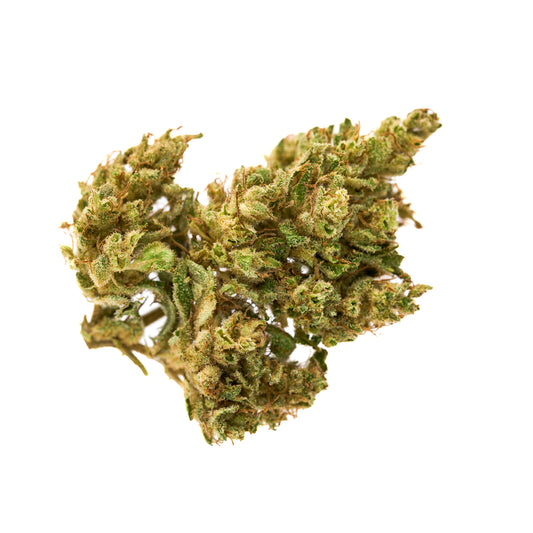
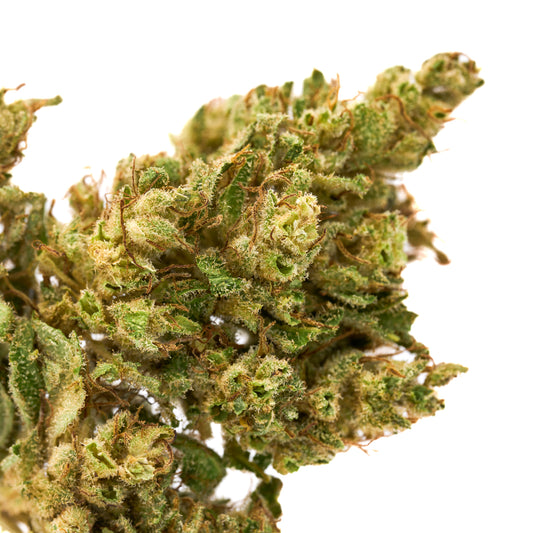
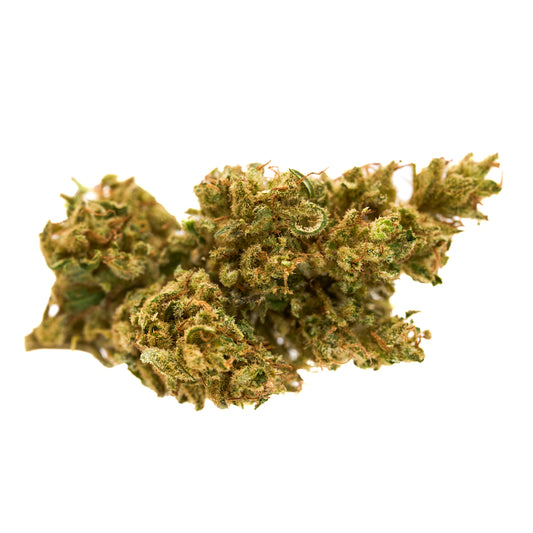
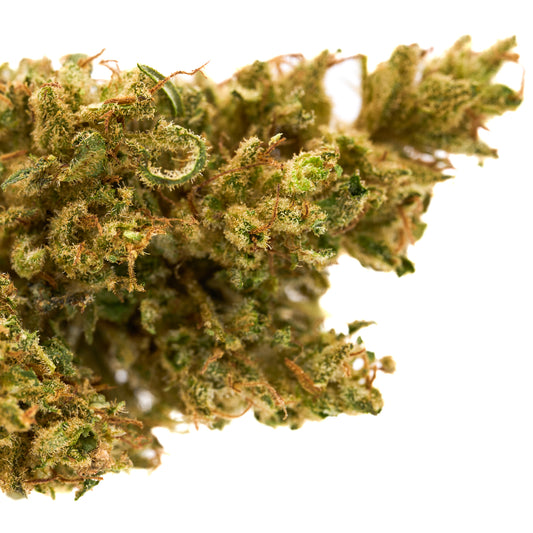
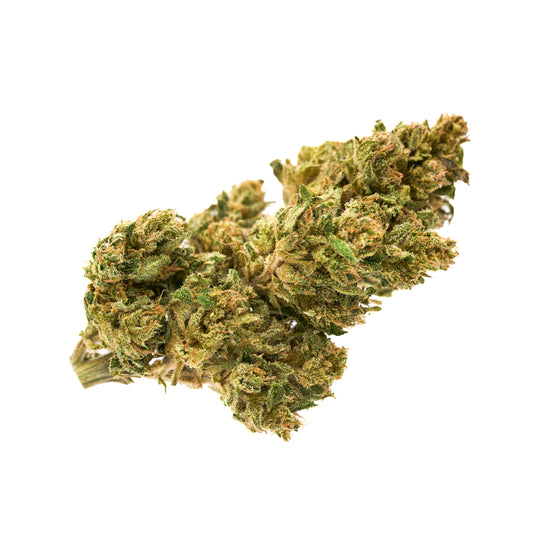
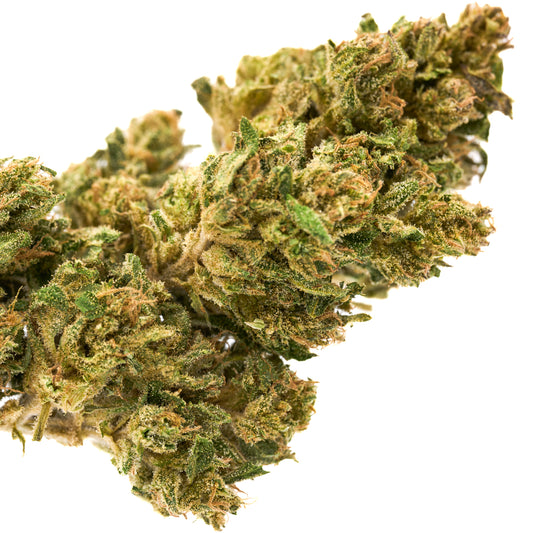



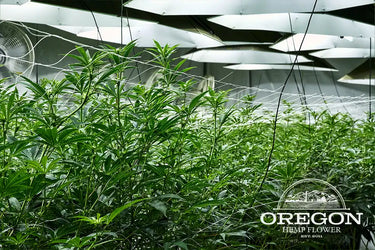

Leave a comment
Please note, comments need to be approved before they are published.